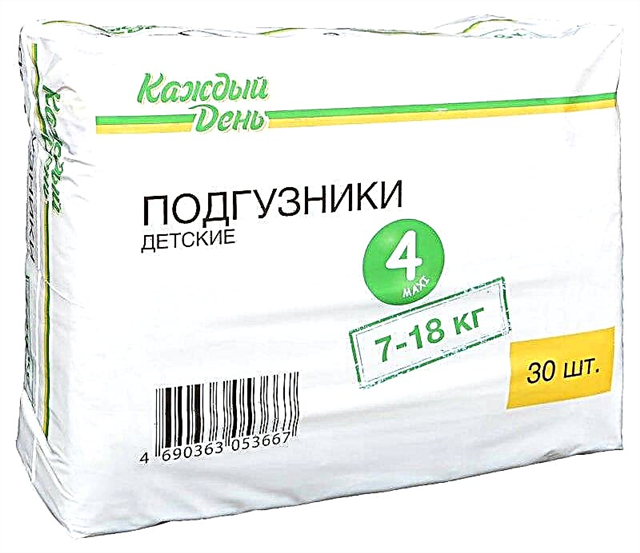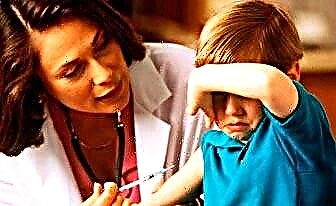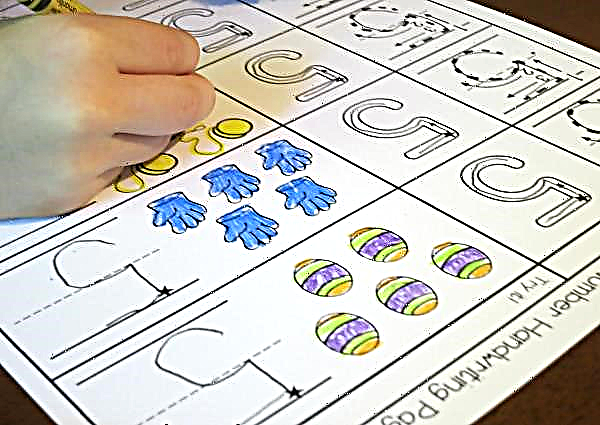Childhood is a "favorable" period for such a phenomenon as seizures, which is often explained by the energy-consuming process of growth and development of the baby. At this time, significant changes in the work of the nervous system occur, therefore, the occurrence of seizures is permissible until a certain age. At the same time, in older children, such attacks are most often a sign of pathology. Therefore, it is very important to identify the problem in a timely manner and, if necessary, seek help. The article will discuss what the causes and consequences of seizures in a newborn baby are, how to recognize seizures in an infant and what to do with seizures in a child.

Muscle cramps in a child are common
Mechanism of occurrence
Seizures are uncontrolled contractions of muscle tissue that occur suddenly in the form of seizures of a certain duration and are a clinical sign of a malfunction of the central nervous system. Contractions can be local in nature or affect several muscle groups at once.
The mechanism of spasms is directly related to the functioning of muscle tissue. The latter consists of many filaments, which are divided into two groups: actin and myosin. Their connection to each other occurs through bridges. The spasm begins at the moment when the actin and myosin filaments diverge when stretched. When contracted, they enter one another, as a result of which a stable connection is formed between them.
During a cramp, muscle fibers contract. This process is triggered by the brain, which directs waves of electrical charges to muscle cells. Further, the release of calcium ions occurs, under the influence of which muscle contraction is carried out. This process provides ATP (adenosine triphosphate). Having fulfilled their function, calcium ions return to the so-called calcium store - the sarcoplasmic reticulum.
Each muscle cell contracts, and the more intense this process, the more electrical charges are required to act on more cells. When the impulses cease to act on the muscles, the supply of calcium from the store stops, and the muscle relaxes.
The work of the electrochemical gradient, which is provided by sodium-potassium ATPase, is also important. Lack of potassium or sodium leads to the fact that the strength of the electrochemical gradient is insufficient for nutrition. As a result, calcium ions remain in muscle tissues, provoking muscle contraction and causing spasms. The attack gradually subsides as calcium consumption and ATP supply decrease.
Another mechanism for the onset of spasm is explained by the impossibility of relaxing the muscles due to incomplete detachment of the myosin and actin filaments. This is due to a lack of ATP - the amount of acid is not enough to connect or separate the muscle fibers and, accordingly, to contract or relax them. With a small amount of ATP, myosin filaments remain attached to actin. In order for the muscle to recover and relax, ATP re-synthesis is required.
On a note. Muscle contraction is the result of processes occurring in muscle cells under the influence of various conditions. The most common of them are primary muscular processes caused by injury, overload, hypothermia of tissues. Electrolyte disturbances and malfunctions of the central nervous system can also lead to seizures.
The main types of seizures in a child
Depending on the cause that caused the attack, spasms are divided into types:
- Epileptic. Convulsive shudders are provoked by excitation of the GM cortex.
- Non-epileptic. Associated with a lack of vitamins and minerals in the body, temperature extremes, diseases of the nervous system, malignant neoplasms, the postoperative period, etc.
By the type of mechanism for the occurrence of seizures, the latter are of the following types:
- Tonic. Prolonged muscle tissue spasm;
- Clonic. The alternation of jerky synchronous muscle contractions with their relaxation.
- Tonic-clonic. They combine the symptoms of the first two types of seizures;
- Atonic. They are characterized by a sharp disappearance of muscle tone;
- Myoclonic. Short-term muscle contractions that occur at random.
Depending on the spread, seizures can be:
- Localized (focal). The spasm occurs within one area of the body;
- Generalized. The cramp seizes all muscles at the same time.
Tonic
They represent prolonged muscle tension. At this moment, the child's body bends strongly, the baby stretches his legs, spreads his arms, throws his head back. There is a possibility of respiratory arrest, which is indicated by a red complexion, a bluish tinge to the arms and legs, and the nasolabial triangle.
On a note. "Freezing" of the body can also occur in a bent position. There is a possibility of loss of consciousness.
Clonic
The stages of relaxation and tension of muscle tissue quickly replace each other, which is expressed in 1-2 twitchings per second. During seizures, body movements are chaotic and not in any way controlled by the child. A similar condition usually occurs during sleep, when the baby is in a prone position.

Tonic and clonic spasm in a child
Febrile
Seizures of this nature appear in children before they reach 6 years of age. During a seizure, there is a slight contraction of muscle fibers, holding of breath, loss of consciousness. The most common cause of this condition is a sudden increase in body temperature (above 38 degrees).
Respiratory affective
This type of seizure occurs quite often in babies aged 6 months to 3 years. An attack is characterized by a sudden holding of breath and a short course of this condition. The spasm most often occurs when falling asleep on the stomach, and the main reason is the child's emotional overexcitation preceding the attack.
Epileptic
This is the most dangerous type of muscle spasm. This condition occurs suddenly and is characterized by the following symptoms:
- Violation of the limbs;
- Reduction of all muscles;
- Loss of limb sensitivity;
- Inability to control the movements of the arms and legs.
At the same time, the child loses consciousness. Often, the patient has a retraction of the tongue. Body movements are strong, involuntary, abrupt. These seizures are caused by neural discharges inside the cerebral cortex.
Interesting. Epilepsy affects about 1-5% of children. Seizures almost never occur at night. When making a diagnosis, attention is paid to both possible causes of seizures and risk factors, as well as genetic predisposition. The most common causes of epilepsy in children are heredity, disorders of the central nervous system, infections (meningitis, encephalitis), head trauma.
Symptoms
Seizures in a child (infant or older toddler) can be distinguished by the following:
- The presence of tics and twitching;
- Uncontrolled movements of the limbs;
- Lockjaw;
- Distortion of facial expressions and facial features;
- Pallor of the skin and cyanosis of the lips and nasolabial triangle;
- Eye rolling;
- Severe drooling;
- Freezing in an unnatural position;
- Nausea, vomiting;
- In some cases, loss of consciousness;
- Possibly urinary and fecal incontinence;
- After an attack, the baby may look apathetic, lethargic.
On a note. Not all of these symptoms are required. The manifestation of each of them occurs individually, the degree of their severity is determined by the health of the baby, his emotional state and the development of the underlying disease.
Rules of action for seizures
To help a child with a convulsion before the doctor arrives, you need to do the following:
- Eliminate obstacles to breathing, for this, remove embarrassing clothing, ventilate the room;
- Turn the child on its side (to prevent the tongue from sinking and facilitate the release of saliva and vomit outside), put a towel under the head;
- Remove any stabbing, cutting, heavy objects that can harm the baby away;
- Insert a tissue tourniquet into your mouth so that the baby does not bite his tongue;
- If the spasm occurs against the background of a strong increase in temperature, you need to give the child an antipyretic, wipe his body with a damp cloth, make compresses;
- If a child has cramps, it is necessary to massage or otherwise affect the muscle, such as pinching or pricking.

First aid for seizures in a child
Important! In case of a generalized attack, you should not give the child any fluids and medications, try to unclench the clenched jaw.
Prevention
In order to prevent the recurrence of febrile seizures against a background of high body temperature, it is recommended to bring down the temperature when it rises to 37.5 degrees.
Prevention of seizures in a child should begin during pregnancy. To do this, the expectant mother needs:
- Eat a balanced diet;
- Try to avoid stress;
- Eliminate bad habits;
- Protect yourself from infectious diseases;
- Take daily walks;
- Exercise gymnastics for pregnant women.
To prevent the recurrence of seizures in a child, you must adhere to the following rules and recommendations:
- Compliance with the diet;
- Physical education;
- Timely visit to the pediatrician;
- Elimination of provoking factors.
Possible consequences of seizures
In most cases, febrile seizures in infants do not lead to any consequences. Babies have a high capacity for brain regeneration, so even frequent seizures do not cause significant brain deficits. In older children, the situation is different: frequent and prolonged seizures lead to severe oxygen starvation of the GM, which can lead to serious health problems.
If we are talking about epileptic seizures in an infant, then complex treatment and constant monitoring by a specialist are necessary. Without proper treatment, each new seizure will negatively affect the child's intellectual abilities and, as a result, lead to a loss of them.
Seizures in a newborn baby can be fatal. If the cause is not established in time and treatment is not started, the child may develop encephalopathy or ischemic stroke.

Infant cramps
A child can have seizures at any age, be it an infant or teenager. It is important to know how spasms and cramps manifest in infants, to understand why they occur. If these occur, you need to carefully monitor the crumbs and try to eliminate or minimize the provoking factor.



